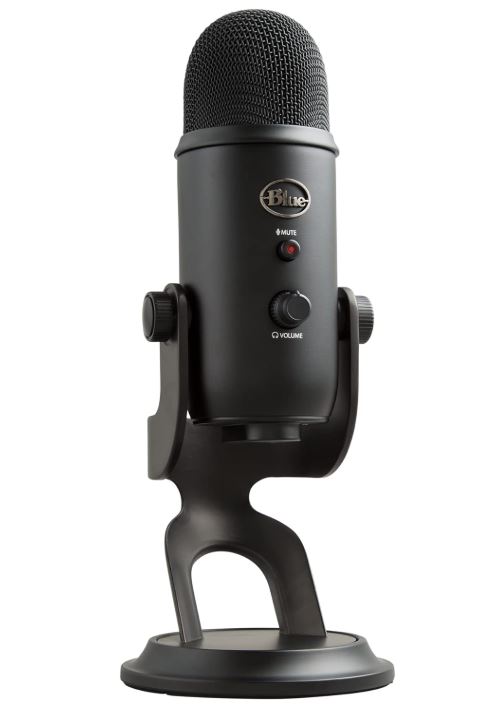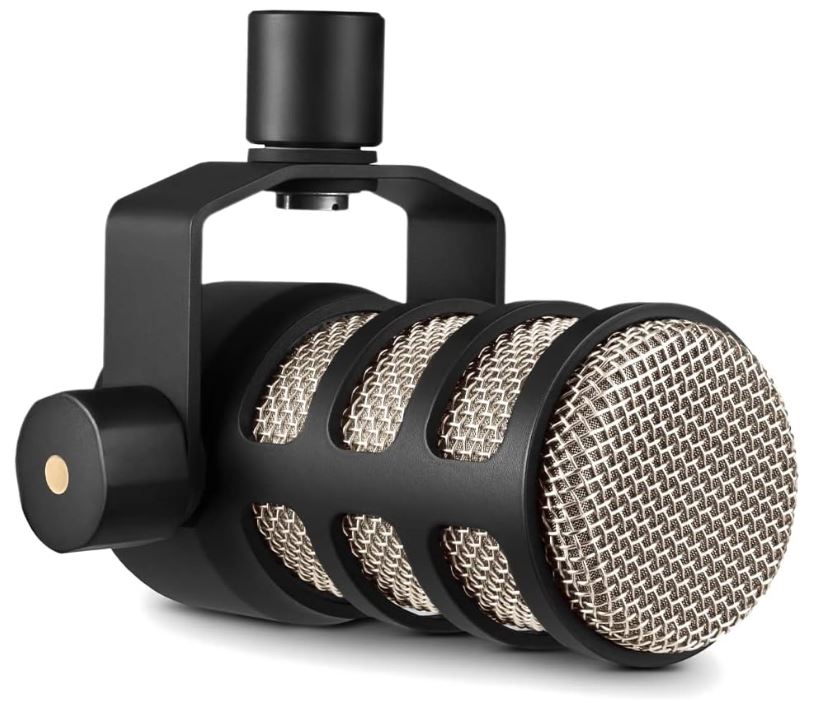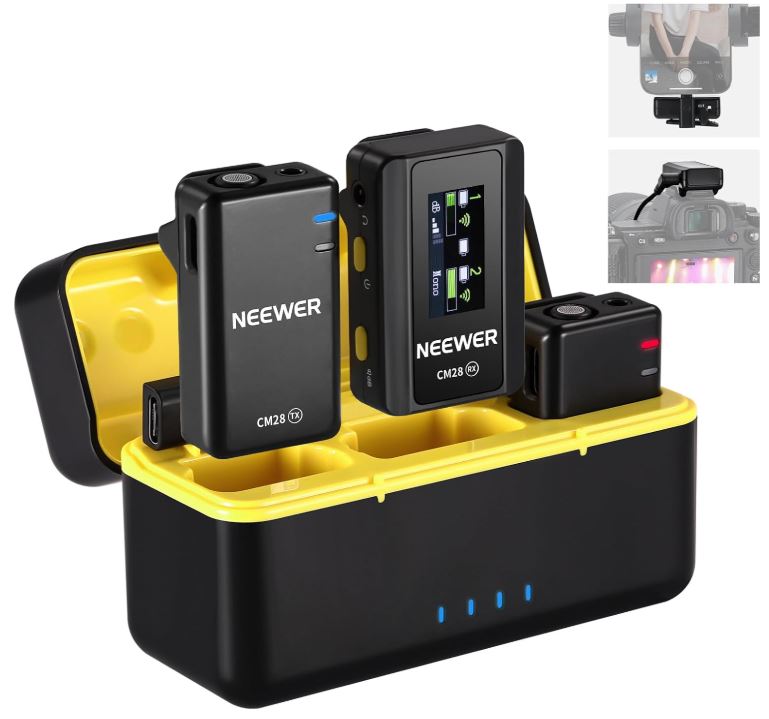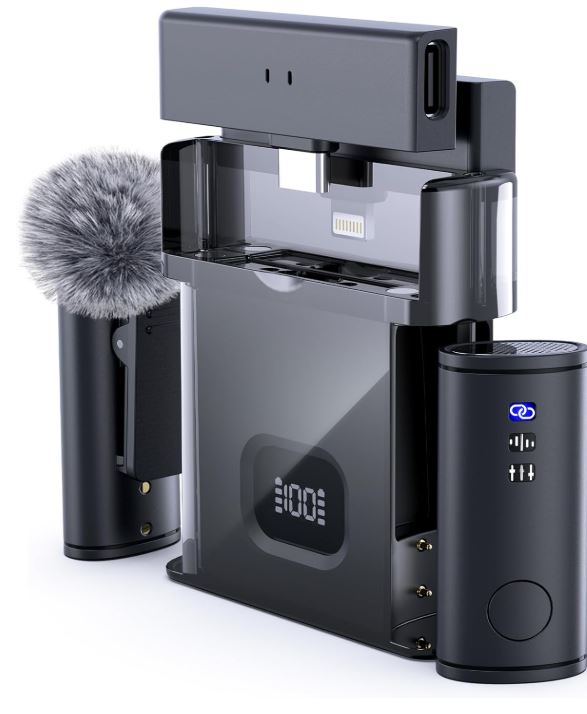Discover how a microphone in your computer can transform your digital experience and communication!
Understanding Microphones in Computers
In today’s digital world, the microphone in your computer plays a pivotal role, enabling everything from video conferencing to voice recognition. But how much do you really know about this essential device? Studies show that over 80% of remote workers rely on their computer microphones for daily communication. Understanding how your microphone works can significantly enhance your usage and troubleshooting skills.
Our Top Picks - Best USB Microphones 🎙️
Looking for the perfect microphone? Check out our top-rated USB microphones for crystal-clear sound & studio-quality performance! 🎧✨
This article will dive into the various types of microphones, their applications, and how to optimize their performance for your needs. Whether you’re a gamer, a podcaster, or simply using video calls for work, knowing the ins and outs of computer microphones will empower you to communicate effectively.
Let’s explore the fascinating world of computer microphones and uncover everything you need to know!
| Key Fact | Detail |
|---|---|
| Microphone Types | Dynamic, Condenser, USB, and Built-in |
| Common Applications | Gaming, Podcasts, Voice Commands, and Video Calls |
| Noise-Cancellation Importance | Enhances clarity in noisy environments |
| Popular Brands | Blue Microphones, Audio-Technica, and Rode |
1. Types of Microphones
Microphones come in various types, each suited for different applications. Understanding these types can help you choose the right one for your needs.
Dynamic microphones are robust and handle high sound pressure levels, making them ideal for live performances. They are less sensitive to background noise, which is advantageous for recording in noisy environments.
Our Top Picks - Best Wireless Microphones 🎤
Looking for a wireless solution? Check out our top-rated wireless microphones for hassle-free, high-quality sound! 🎶✨
Condenser microphones are favored for studio recordings due to their sensitivity and wide frequency response. They capture more detail, which is essential for vocals and acoustic instruments.
2. Built-in vs. External Microphones
Many computers come with built-in microphones, which are convenient for quick tasks. However, the audio quality may not meet professional standards, especially for content creators.
External microphones, such as USB or XLR models, generally offer superior sound quality and features like adjustable gain and directionality. Investing in an external microphone can significantly elevate your audio production.
Consider your primary use case: if you’re frequently participating in video calls, a decent external mic will provide clearer sound than most built-in options.
3. Applications of Computer Microphones
Computer microphones have a wide range of applications, from gaming to professional podcasting. Each use case requires specific features to optimize performance.
For gamers, low-latency microphones with noise-cancellation capabilities are crucial for clear communication during gameplay. This ensures that teammates can hear commands without interference from background sounds.
Podcasters often prefer condenser microphones for their ability to capture a rich, detailed sound. Many also use pop filters to reduce plosive sounds, creating a polished audio experience for listeners.
4. How to Choose the Right Microphone
Choosing the right microphone can be daunting with so many options available. Start by identifying your primary use case: are you recording music, streaming, or making calls?
Next, consider the environment in which you’ll be using the microphone. If you’re in a noisy area, look for models with noise-cancellation features. For quiet settings, a sensitive condenser microphone might be ideal.
Finally, set a budget. Microphones can range from affordable to high-end, but many mid-range options provide excellent quality.
5. Setting Up Your Microphone
Once you have selected your microphone, setting it up correctly is crucial for optimal performance. Start by connecting the microphone to your computer and installing any necessary drivers.
Next, adjust the input settings on your computer. Access the sound settings and select your microphone as the default input device. Test the audio levels to ensure they are not too low or peaking.
Finally, consider using acoustic panels or other soundproofing methods to minimize background noise, further enhancing the clarity of your recordings.
6. Troubleshooting Common Microphone Issues
Microphone issues can be frustrating, but many problems have straightforward solutions. If your microphone is not working, first check the connection and ensure it is securely plugged in.
Sometimes, the issue lies within the computer settings. Go to sound settings and ensure the microphone is not muted and that the input levels are appropriately set.
If problems persist, consider updating your audio drivers or checking for physical obstructions that might impede sound quality.
7. Noise-Cancellation Technology
Noise-cancellation technology is essential for improving audio clarity in environments with background noise. This feature works by using microphones to pick up ambient sounds and then generating a sound wave that cancels them out.
There are two types of noise cancellation: passive and active. Passive noise cancellation involves physical barriers to sound, while active noise cancellation uses electronic processing to reduce unwanted noise.
For professionals working in bustling environments, microphones with active noise-cancellation features can significantly enhance the audio quality of recordings.
8. The Role of Microphones in Streaming
For streamers, having a high-quality microphone is crucial. Viewers expect clear audio, and poor sound quality can detract from the overall experience.
Popular choices among streamers include USB microphones for their ease of use and audio interfaces for those seeking professional-level sound quality.
Additionally, using a good pop filter can help manage plosive sounds, ensuring that your stream remains engaging and professional.
9. Microphones for Podcasting
Podcasting has exploded in popularity, and the right microphone can make all the difference in sound quality. Many podcasters opt for dynamic microphones for interviews as they minimize unwanted background noise.
Condenser microphones are also popular for their sensitivity and ability to capture rich audio, making them ideal for solo recordings.
Investing in a quality microphone can elevate your podcast, allowing you to create a professional-sounding product that attracts and retains listeners.
10. Voice Recognition and Microphones
Voice recognition technology has become increasingly sophisticated, allowing for hands-free operation of devices. Microphones play a vital role in this technology by capturing your voice accurately.
For effective voice recognition, choose a microphone designed to filter out background noise and capture clear audio, as this will improve the system’s ability to understand commands.
As voice assistants become more common, ensuring you have the right microphone can enhance your overall experience with these technologies.
11. User Reviews and Case Studies
User experiences can provide valuable insights into the performance of various microphones. For example, many content creators rave about the Blue Yeti for its versatility and sound quality.
Case studies show that podcasters using high-quality microphones have significantly improved listener retention and engagement, leading to greater overall success.
Reading reviews and case studies can help you make informed decisions about which microphone will best suit your needs.
12. The Future of Microphone Technology
As technology evolves, so do microphones. Innovations such as smart microphones with built-in AI capabilities are on the horizon, promising to enhance user experience.
These advancements may include better noise cancellation, improved voice recognition, and integration with other smart devices, making microphones more versatile than ever.
Keeping an eye on emerging technologies can help you stay ahead of the curve and choose microphones that meet future demands.
13. Microphone Accessories
Enhancing your microphone setup with accessories can improve audio quality and usability. Pop filters, shock mounts, and windshields are just a few examples.
Pop filters help reduce plosive sounds when speaking, while shock mounts prevent vibrations from affecting the microphone’s performance.
Using these accessories can take your audio recordings to the next level, ensuring that you deliver the best sound possible.
14. Choosing Between USB and XLR Microphones
When selecting a microphone, you may encounter the choice between USB and XLR models. USB microphones are convenient and easy to use, making them ideal for beginners.
XLR microphones, on the other hand, offer superior sound quality and are typically used in professional settings. They require an audio interface or mixer, which can be more complex for new users.
Understanding these differences will help you choose the right microphone type based on your experience level and audio needs.
15. The Importance of Microphone Placement
Microphone placement can significantly affect audio quality. Positioning your microphone too far away can result in low volume, while being too close may cause distortion.
Experiment with different placements to find the sweet spot that captures your voice clearly without unwanted noise.
For optimal results, consider using a boom arm or mic stand to position your microphone at an appropriate distance from your mouth.
16. Maintaining Your Microphone
To ensure longevity and optimal performance, regular maintenance of your microphone is essential. Keep your microphone clean and free from dust, and periodically check cables for wear and tear.
Store your microphone in a protective case to prevent damage when not in use. This simple step can extend the life and maintain the quality of your device.
Taking care of your microphone will ensure that it continues to perform at its best for years to come.
17. Integrating Microphones with Other Technologies
Microphones can be integrated with various technologies for enhanced functionality. For instance, pairing a microphone with audio interfaces can significantly improve recording quality.
Additionally, using microphones with software like digital audio workstations (DAWs) can open up new creative possibilities, allowing for advanced editing and mixing.
Understanding how to integrate your microphone with other technologies can provide you with a more comprehensive audio production experience.
18. The Role of Microphones in Education
In educational settings, microphones are crucial for effective communication. Teachers and lecturers often use microphones to ensure that their voices are heard clearly by all students.
Additionally, online learning platforms utilize microphones for interactive sessions, enabling students to participate actively.
Investing in quality microphones for educational purposes can enhance the learning experience and facilitate better communication.
19. The Impact of Social Media on Microphone Usage
Social media has transformed how we communicate, and microphones play a significant role in this shift. Platforms like TikTok and Instagram rely heavily on audio content, making high-quality microphones essential for creators.
The demand for clear audio in social media content has led to an increase in microphone sales, as users seek to improve their production quality.
Understanding this trend can help you leverage the power of audio content in your social media strategy.
20. Best Practices for Recording with Microphones
To achieve the best recording quality, follow these best practices: always perform a sound check before starting. This ensures that your levels are set correctly and that there are no unexpected issues.
Additionally, monitor your recordings in real-time to catch any problems early. Using headphones during recording can help you identify issues like background noise or distortion.
Lastly, consider the acoustics of your recording environment; using soft furnishings can help dampen echoes and improve sound quality.
Frequently Asked Questions
What type of microphone is best for podcasting?
Dynamic microphones are often recommended for podcasting due to their ability to minimize background noise. Condenser microphones can also be effective, especially in quiet environments, as they capture more detail.
Can I use a USB microphone for gaming?
Yes, USB microphones are popular among gamers for their ease of use and decent sound quality. Look for models with noise-cancellation features to improve clarity.
How do I improve microphone audio quality?
To improve audio quality, ensure proper placement, use a pop filter, and consider acoustic treatment for your recording environment. Regular maintenance can also help maintain quality.
Are external microphones worth the investment?
Yes, external microphones generally provide better sound quality compared to built-in options. If you’re serious about content creation or communication, investing in an external microphone can significantly enhance your audio experience.
What is the difference between dynamic and condenser microphones?
Dynamic microphones are durable and handle high sound pressure levels, making them suitable for live performances. Condenser microphones are more sensitive and capture a wider frequency range, ideal for studio recordings.
Glossary
- Dynamic Microphone
- A type of microphone that uses a diaphragm and coil to convert sound into an electrical signal, known for durability and handling high sound levels.
- Condenser Microphone
- A microphone that uses a capacitor to convert sound into an electrical signal, known for its sensitivity and ability to capture detailed sound.
- Noise-Cancellation
- A technology that reduces unwanted ambient sounds, enhancing audio clarity during recordings or calls.
Conclusion
Understanding the intricacies of microphones in computers can greatly enhance your digital communication and content creation experiences. From choosing the right type to setting it up and maintaining it, each step is crucial in ensuring you get the best sound quality possible. Take action today—evaluate your current setup, explore the best options available, and invest in a microphone that meets your needs. Engage with us in the comments below to share your experiences or ask questions!





